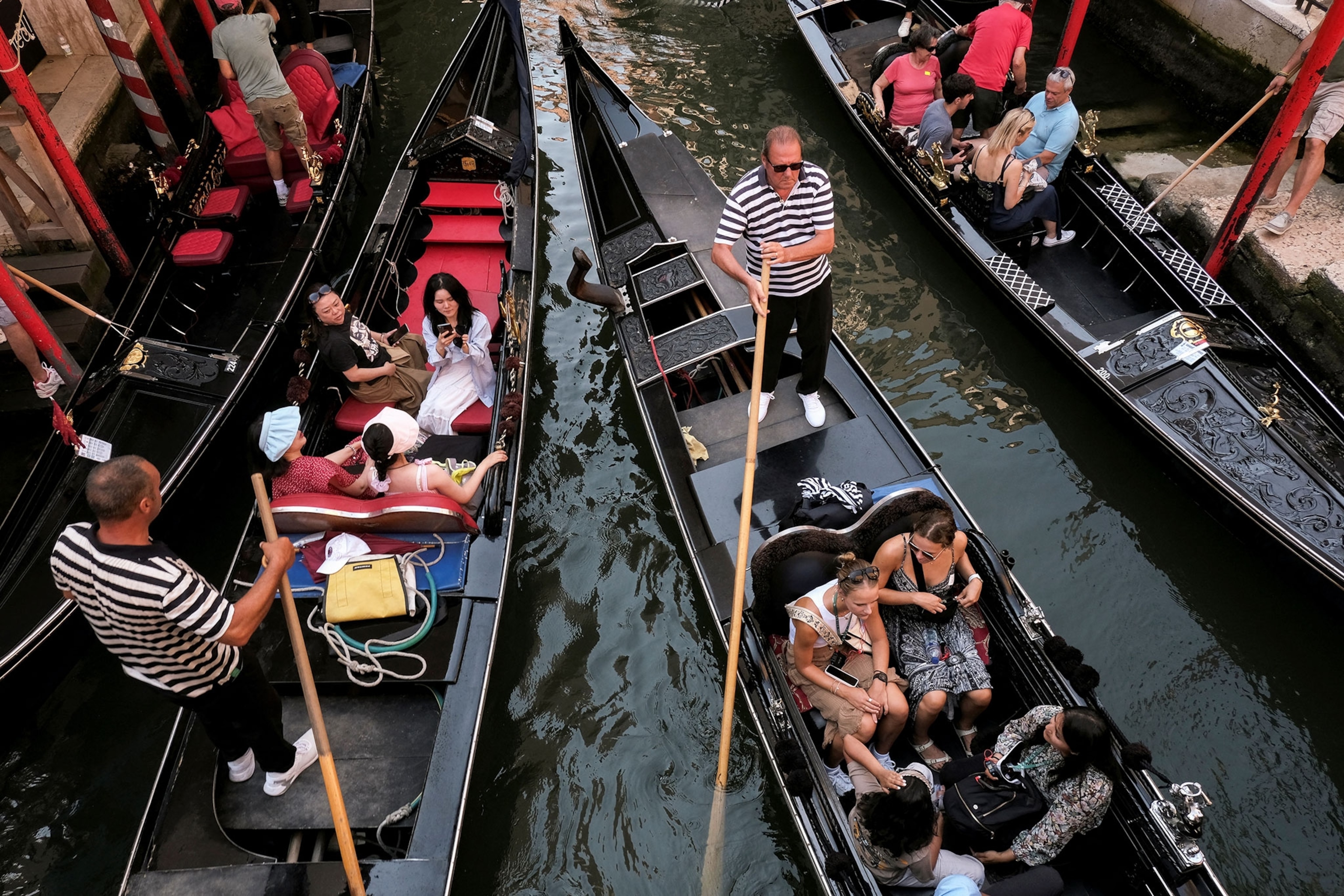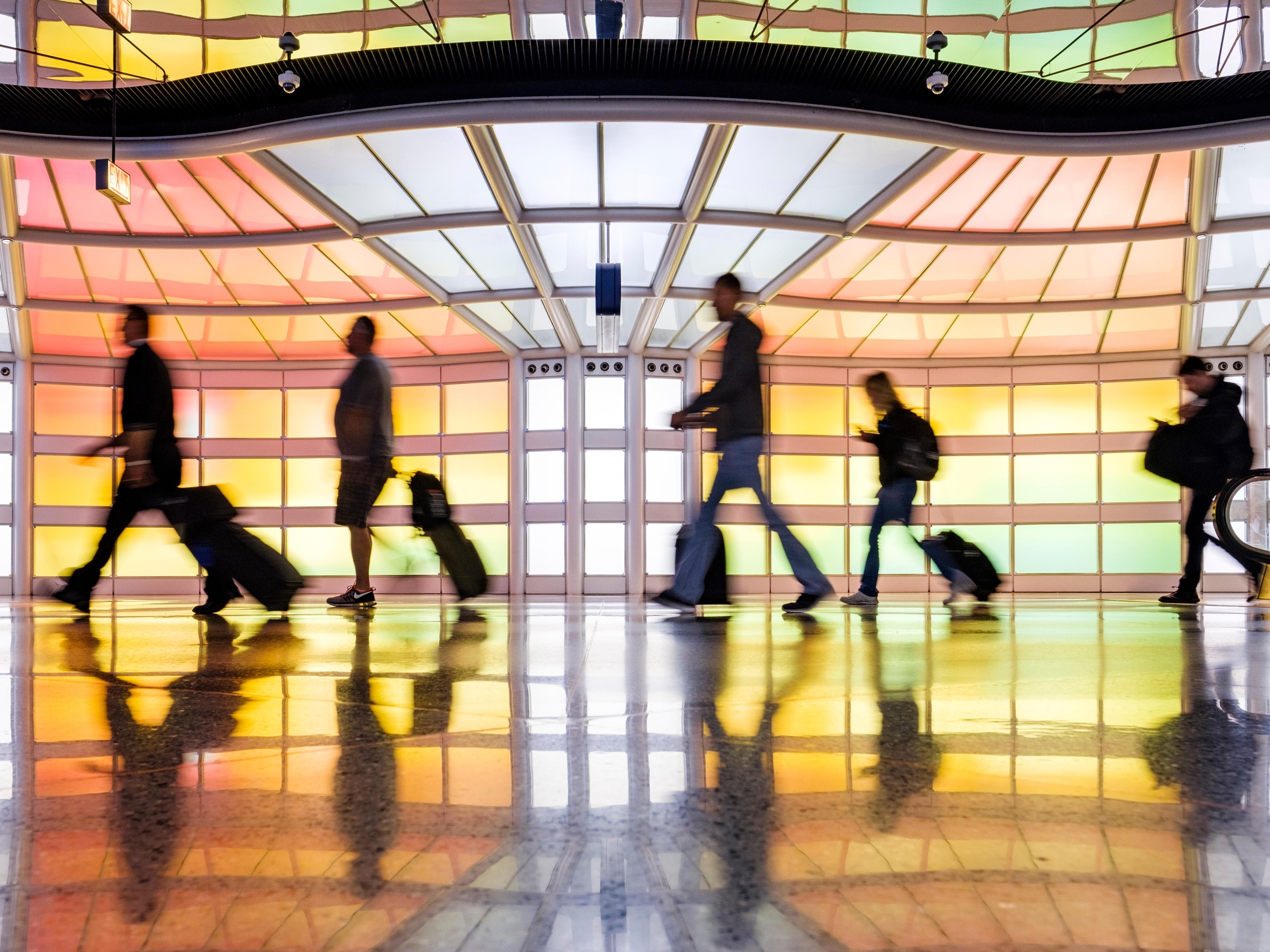A look at Europe’s tourist taxes—have they helped curb overcrowding?
We evaluated imposed tourist fees in European cities like Barcelona, Amsterdam, and Venice to find out where the money really goes.

If you’ve vacationed in Europe over the past year, then you’re probably aware of the overwhelming surge in tourists. A rise in overtourism has sparked Venice to ban groups larger than 25 people and guides from using loudspeakers on the streets. In Portugal, Lisbon will double its tourist tax from $2.15 to $4.30 on September 1.
Crowded landmark sites, such as Las Ramblas in Barcelona, Dam Square in Amsterdam, and St. Mark’s Square in Venice, have forced all three cities to impose or increase existing tourist taxes to curb overcrowding and placate frustrated locals.
That hasn’t quelled anger in Barcelona, where protestors recently chanted “tourists go home” and sprayed visitors with water pistols. So, we wanted to understand how tourist taxes are collected and do they really ease overtourism and help local communities.
City officials say that revenue from the imposed fees are indeed used to improve quality of life for locals, whereas some tourism experts claim there are no quantitative results. Here’s a quick dive into what happens when you pay tourist fees in Barcelona, Amsterdam, and Venice and do they really work.
(What is overtourism? Here's what you should know.)
Barcelona
Spain’s busiest city, receiving 15.6 million tourists last year, Barcelona is central to debates about overtourism, and how visitors to a destination can help fund its upkeep. This city has two forms of tourist tax, says Núria Guitart-Casalderrey, tourism professor at the University of Barcelona.
The first, introduced in 2012, is applied to hotel stays and cruise ship visitors across Catalonia, the region in which Barcelona is located. This tax is charged on a sliding scale. Guests at five-star hotels in Barcelona, for example, get the highest rate of $3.79 per person per night.
Half of the revenue from that tax is managed by the City of Barcelona, Guitart-Casalderrey says. Whereas the city keeps all the income from the second tourist tax, enacted in 2021.
Between the two tourist taxes, the Barcelona City Council expects to collect $103 million this year, she explains. These charges haven’t deterred tourists from visiting Barcelona. But they have improved the city as a destination, and enhanced quality of life for its residents, according to Guitart-Casalderrey.
She says the Barcelona City Council is transparent in publicly listing activities and projects funded by tourist tax revenue. Proceeds have been used to organize cultural events, expand public transport services, and fund tourism research.
Barcelona Turisme CEO Mateu Hernàndez says the tourist tax allows the city to pay for “better exhibitions, festivals, and sports events, benefiting both residents and tourists alike”. It has helped fund Barcelona’s role as host of the 2024 America’s Cup, which involves five sailing events between August 22 and October 20.
This prestigious sports festival is key to the tourist tax’s stated aim to “attract more quality visitors”, according to Hernàndez. Tourist tax income also improves “daily life” for Barcelona residents. “Such as by investing in air conditioning for primary schools, demonstrating the direct benefits of tourism to the community,” he explains.
Amsterdam
Amsterdam has the highest tourist tax of any European city, charging 12.5% of the nightly rate for accommodation at hotels, campsites, and serviced apartments. Four-star hotels in the expensive Dutch capital have a base price of up to $216 per night, for example, which translates to $27 of additional tourist tax.
City of Amsterdam deputy mayor Hester van Buren says Amsterdam expects to collect $262 million in tourist taxes during 2024. These funds will be used both to mitigate the impact of tourism and improve the city.
“We ask visitors for a contribution to keep Amsterdam clean, safe and attractive, just like we ask from our own residents with local taxations,” says van Buren. “On the one hand (the tax is used) to combat the negative sides of over-tourism, like littering, cleaning, law enforcement. On the other hand, we use this for infrastructure, education, cultural life, sport facilities.”
Visitors have not been put off by the city’s steep tourist tax, which started at 5% back in 2018, he says. “Amsterdam has welcomed an increasing number of tourists, apart from a decrease during Corona (Covid-19),” she notes. In 2023, approximately 9 million people visited Amsterdam for an overnight stay.
“Yet this tax originally was introduced to reduce tourist arrivals,” says Greg Richards, professor of placemaking and events at Tilburg University in the Netherlands. “The City of Amsterdam has since changed its reasoning for the tax from tackling overtourism to raising funds”
Richards believes this shift is due to a city-commissioned report which found the tax would not likely reduce tourism unless the rate was tripled. He says that report mirrors wider academic research which has shown no proof tourist taxes counter overtourism.
Currently, it is unclear how Amsterdam spends this revenue. “Tourist tax goes into the general tax budget (so) it is difficult to tell if it will have a significant effect, or simply plug a hole in the Municipal budget,” says Richards.
He adds, “The chances are high that as tourist taxes increase, tourists will stay in surrounding cities and travel into the centre of Amsterdam as day visitors. This will mean a potential loss of revenue to Amsterdam, but no overall decrease in visitor pressure on the city. This effect has already been seen in Venice, which was one reason for introducing a tax on day visitors there.”
Venice
Few destinations are as crowded as Venice, a wondrous, ancient city pierced by dozens of canals in northeast Italy. It receives about 30 million tourists a year, of which 24 million are day trippers, says Associate Professor Jan van der Borg, an economist and tourism expert at Ca' Foscari University of Venice.
Overtourism in Venice is so severe that UNESCO last year warned it may add the city to its list of endangered World Heritage sites. Van der Borg believes this threat prompted the City of Venice to trial a new day-trip entry fee. From late April to mid-July, tourists who didn’t book their accommodations in Venice were asked to pay $5.40 per person per day to enter the city on 29 specified dates.
The City of Venice didn’t respond to questions from National Geographic, although it has publicly stated the day-trip fee is part of efforts to counter overtourism. However, tourist numbers did not fall during the trial, says van der Borg. Not only did the day trip fee fail to combat overtourism, but he claims, that the local community is not benefits of the day-trip fees.
In fact, it caused the City of Venice to lose, rather than make money. “The implementation of the scheme has cost collectively €3 million ($3.2 million), while the tax raised (is) slightly more than €2 million ($2.2 million),” says van der Borg. “Local taxpayers will cough up this difference.”
The City of Venice could re-introduce the day-trip fee, and possibly double it, according to media. Van der Borg warns that, while that will boost the city’s tax base, it’s unlikely to reduce tourism to a manageable level. The dilemma in Venice mirrors what’s already unfolding in Amsterdam and Barcelona, both of which are now flush with visitor tax revenue, yet are no closer to solving a growing overtourism issue.
(What you need to know about European travel this summer.)







